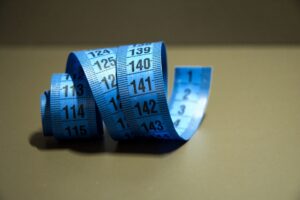The Mirror Is Canceled
Published on February 21, 2023, at 12:04 p.m.
by Helen Carson.
Body image is not a new topic. Studies from the National Organization of Women show that, by the age of 13, 53% of girls report being unhappy with their bodies. Even worse, this number jumps to 78% by the age of 17.
A study at Stanford University and the University of Massachusetts discovered that there is a strong link between negative body image and societal factors, such as television. According to a Stanford University BeWell article, “there used to be evidence that negative body image occurred more for women than men, and more for white women than for other ethnic groups — but the gap has narrowed over time.” It’s a problem that “persists throughout different demographic groups,” and media is the “most prevalent” source of body image.
This issue raises an important question — how can public relations practitioners help with inclusivity?

A student-run public relations blog stated the body image effect perfectly: “When one person’s opinion goes viral this can create a domino effect and create a social media uproar. The power of opinions and views can make or break a business.”
Dr. Kimberly Bissell, director of the Institute for Communication and Information Research and journalism professor at The University of Alabama, shared the importance surrounding public want and brand loyalty with campaigns focused on body positivity.
Companies like Old Navy and influencers such as Remi Bader have attempted to create size-inclusive clothing. Emily Dirks, a Ph.D. student in sports media from The University of Alabama, emphasized that the reality of these rebrands was not necessarily entirely based on public want but also on need. Aerie, a sub-company of American Eagle, has also made several attempts as body-positive campaigns with its authentic and diverse marketing techniques.
Bissell shared that over the last 10 years, but especially in the last five, specialty companies such as Oiselle, a female-based, running apparel company, have dedicated their brands to promoting positive body image and emphasizing inclusion. She explained that being “outspoken and proactive” in a brand’s values is not always widely accepted, however, which is why so many companies struggle with addressing discrimination and exclusivity in social issues head-on.
Saying and doing are two completely different things. For example, the popular brand Lululemon struggles to act on body inclusive sizing as many customers share they are often two sizes up from their regular sizes when buying the brand’s athleisure clothing. In 2013, Lululemon founder Chip Wilson spoke negatively in response to such accusations,deeming the women who wear the pants to be the issue, not the product itself. Essentially, Wilson spoke ill of larger women wearing Lululemon athletic wear, causing the brand to lose customers and brand loyalty.
Social media is easy to blame for body shaming, but with new apps such as BeReal, the internet is slowly stepping into a more realistic image. Bissell and Dirks both commented on the the BeReal app. This new-found authenticity platform has been a great avenue to address the falsity on other platforms and provides a more realistic approach to everyday life according to Bissell and Dirks. Platforms like BeReal work on addressing the perfection we often see on other platforms such as Instagram to creep away from the doubt and negativity that can arise from these heavily curated posts.

Yet social media is not the only platform to blame. Distorted body image starts young with the shows we watch, the toys we play with and even how parents approach the conversation of body image. “[In] programming on actual television and digital magazines, there is an effort to include all sizes of people,” Bissell noted, but “if you have bigger characters, they really try to find people who still have pretty or attractive faces.”
There are a lot of moving parts when it comes to trying to fix the negative energy that can surround body image. Social media is a prime example of a blessing and a curse. The versatility of these platforms makes shared media beneficial in the public relations sphere, yet also challenges the distinction between reality and fantasy. It is easy to criticize the falsity of social media, but sometimes everyone needs a piece of the fantasy picture-perfect lifestyle.
When asked how PR professionals can move forward positively, Bissell shared a key complication with correcting body image: The trends are cyclical. This issue commonly ebbs and flows. Negative perception of one’s physical appearance is not an overnight fix, but it often becomes an overnight issue when the cyclical trend takes a negative turn.
To break this cycle, brands have an opportunity to take initiative and go beyond just the industry they are in by promoting body positivity through intentional efforts. Promoting body positivity and inclusivity is an important goal in which PR practitioners have a strong pathway to lead.




